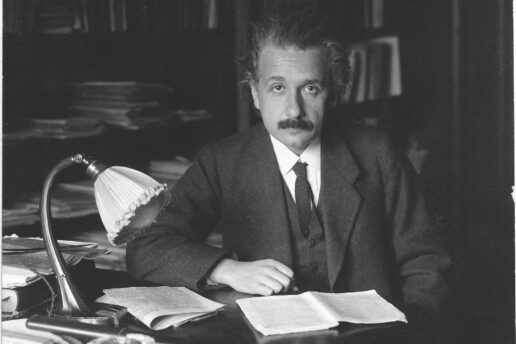
Could Einstein Get Published Today?
Scientific journals and institutions have become more professionalized over the last century, leaving less room for individual style.
Albert Einstein’s 1915 masterpiece “The Foundation of the General Theory of Relativity” is a joy to read. The first articulation of the theory, it is still the best introduction to the subject, and I recommend it as such to students. But it probably wouldn’t be publishable in a scientific journal today.
Why not? After all, it would pass with flying colors the tests of correctness and significance. And while popular mythology holds that the paper was incomprehensible to its first readers, in fact many papers in theoretical physics are much more difficult.
As the physicist Richard Feynman wrote, “There was a time when the newspapers said that only 12 men understood the theory of relativity. I do not believe there ever was such a time. There might have been a time when only one man did, because he was the only guy who caught on, before he wrote his paper. But after people read the paper a lot of people understood the theory of relativity in some way or other, certainly more than 12.”
No, the problem is its style. Einstein’s paper doesn’t fit the mold for modern, professional scientific communication. It starts with a leisurely philosophical discussion of space and time and then continues with an exposition of known mathematics (tensor calculus). Those two sections, which would be considered extraneous today, take up half the paper.
Worse, there are zero citations of previous scientists’ work, nor are there any graphics. Those features would doom a paper today. It might not even get past the first editors to be sent out to referees.
A similar process of professionalization has transformed other parts of the scientific landscape. Grant applications are more rigidly structured and elaborate, as are requests for research time at major observatories or national laboratories. And anything involving work with human subjects, or putting instruments in space, involves heaps of paperwork. We see it also in the Regeneron Science Talent Search (formerly sponsored by Westinghouse and then Intel), the Nobel Prize of high school science competitions. In the early decades of its 78-year history, the winning projects were usually the sort of clever but naive, amateurish efforts one might expect of talented beginners working on their own. Today, polished work coming out of internships at established laboratories is the norm.
These professionalizing tendencies are an all-but-inevitable consequence of the explosive growth of modern science. Standardization and system make it easier to manage the fire hose gush of papers, applications and people. But there are serious downsides. A lot of unproductive effort goes into jumping through bureaucratic hoops, and outsiders face entry barriers at every turn.
It is good that we have some less formal, lower-stakes institutions such as arXiv—an open-access online archive where scientific papers can be posted before they are peer-reviewed, allowing authors to be less formal and more expansive.
Of course, Einstein would have found his way to publishing his results. He’d prune the philosophy, festoon the paper with citations, put the expository bits into “Supplementary Materials” and maybe add some snazzy graphics. Its scientific core wouldn’t have changed, but the paper might not be the same pleasure to read.
Originally appeared on September 24, 2020 on The Wall Street Journal website as ‘Could Einstein Get Published Today?‘
Frank Wilczek is the Herman Feshbach Professor of Physics at MIT, winner of the 2004 Nobel Prize in Physics, and author of the books Fundamentals: Ten Keys to Reality (2021), A Beautiful Question: Finding Nature’s Deep Design (2015), and The Lightness of Being: Mass, Ether, and the Unification of Forces (2009).